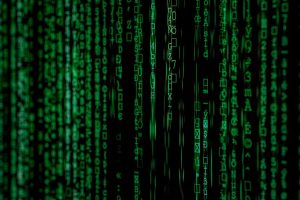Search Algorithms in Artificial intelligence

We can all agree that the impact of artificial intelligence on the world economy has been enormous. By producing an immeasurable amount of data, we help the world’s economy grow. Due to the progress in algorithms in Artificial Intelligence, we can handle this humiliating data.
While search and planning algorithms have taken an end-to-end and deep learning process in recent years, understanding these algorithms can increase your models’ performance. Furthermore, as more powerful technological advancements such as quantum computing emerge, search-based AI is likely to come back.
You can also have practical experience with intelligent agents’ AI programming such as search algorithms, logic problems, and games with the best AI Certification.
Let’s see what Machine Learning is and how it relates to AI before we move any further.
What is Machine Learning?
An algorithm usually takes some data and interprets logic and mathematics to generate the output. A combination of both input and outputs is taken up simultaneously by an Artificial Intelligence algorithm to “learn” the data and produce outcomes when given new information.
This data-learning process by machines is what we call Machine Learning (ML). It is an Artificial Intelligence’s subfields in which we attempt to incorporate AI into the equation by learning input data.
Artificial Intelligence – What is it?
Artificial Intelligence is the study of rationally acting building agents. These agents often perform some background search algorithm to accomplish their tasks.
Since you can solve a problem in more than one way, these agents are looking for all combinations and using approaches to identify the shortest way of achieving the final goal. In artificial intelligence, therefore, search and its agents play a significant role. The search ensures that the AI machine/system works correctly, from a conceptual backbone to various search strategies and algorithms to examine alternatives systematically.
What are search algorithms?
Searching is a step-by-step approach to resolve a search problem in a given search space. The three main factors of the search problem include:
- Search Space: It represents several solutions that may be available for a system.
- Start State: It’s a state from which the agent starts the search.
- Goal test: It is a function that monitors and reveals whether or not the target status is achieved.
Searching algorithms are defined as a means for determining and finding a particular value in a specific data structure. Not only does it enable you to see which value you want, but it also teaches computers to “act rationally” to pursue a specific goal with a particular input value, which is a crucial component of artificial intelligence. Artificial intelligence can solve problems by using searching algorithms.
Types of Search Algorithms
- Uninformed search:
Uninformed search, or Brute-Force search or Blind search, has no additional information or domain knowledge to help it achieve its goal, other than that provided for the problem definition.
This search method is further subdivided into four types:
- Breadth-First Search (BFS) – BFS is the most frequent tree or graph search. It searches breadthwise in a tree or a graph, so the search is called the breadth-first search. In BFS, the search begins with the root node and then expands the entire successor node from the current level before moving to the next level.
- Uniform Cost Search – It is a weighted tree or graph searching algorithm. This algorithm is used when a different cost for each edge is available. The main objective of the uniform cost search is to find a way to the lowest cumulative cost goal node.
- Depth First Search (DFS) – It is a recursive tree/graph data structure algorithm. It begins with the root node and traces every path to its highest depth node before moving onto the following approach.
- Iterative Deepening Search – We do a limited depth-first search to a fixed “limited depth.” We continue to increase the depth limit by the process unless we have found the target node or traversed the entire tree as before.
- Bidirectional Search – Bidirectional search is a visual search. The search begins simultaneously with the source vertex and the goal vertex, unlike the Breadth-First and the Depth First Search, and concludes when the two searches meet in between in the graph. It is primarily used for getting results that both DFS and FS searches take a fraction of the time.
- Informed search:
Also called Heuristic Search, this type of search algorithm uses domain knowledge. It follows a heuristic function to evaluate the cost of an optimal path between two states and how close a state is to the objective.
There are two types of informed search:
- Greedy Search – Greedy best-first search algorithm selects the most appropriate path at the moment. It is a combination of depth and breadth-first search algorithms and uses the heuristic search and function. Best-first search enables us to take advantage of both algorithms. We can choose the most promising node at any stage using the best-first search.
- A* Search – It combines a greedy search and a uniform cost search. The total (heuristic) cost of f(x) in this algorithm is the sum of the cost in uniform cost search indicated by g(x) and greedy search costs of h (x). f (x) = g (x) + h (x)
Properties of Search Algorithms
- Completeness: If there is at least one solution for that particular input, a search algorithm is complete when it returns a solution to any input.
- Optimality: If the solution derived from the algorithm is the best, i.e., having the lowest path cost, the solution is considered to be the ideal one.
- Time and Space Complexity: Time complexity is the time required to complete an algorithm. The complexity of the space is the maximum storage space needed for the search operation.
Concluding words
Artificial intelligence relies heavily on search algorithms and their different kinds to solve problems to reach the goal and perform a task. Artificial intelligence cannot be autonomous, human-like, adaptable without these algorithms. Therefore, together with the intelligent agents, the search algorithms are the AI building blocks that evolve with futuristic technology. Discover today’s fascinating and rapidly changing field of artificial intelligence!






